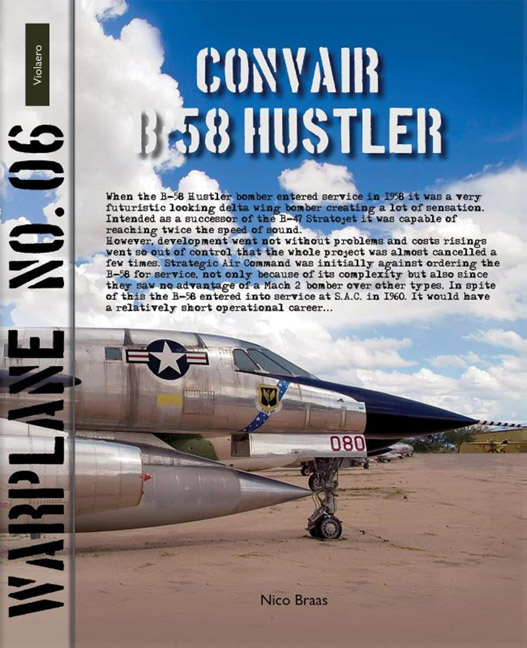Book contents
Summary
When the B-58 Hustler bomber entered service in 1958 it was a very futuristic looking delta wing bomber creating a lot of sensation. Intended as a successor of the B-47 Stratojet it was capable of reaching twice the speed of sound.
However, development went not without problems and costs risings went so out of control that the whole project was almost cancelled a few times. Strategic Air Command was initially against ordering the B-58 for service, not only because of its complexity but also since they saw no advantage of a Mach 2 bomber over other types. In spite of this the B-58 entered into service at S.A.C. in 1960. It would have a relatively short operational career…
Armed with nuclear weapons as a ‘deterrent force’ it was a typical product of the Cold War and the Soviet Union, at that time ‘The Enemy’ had nothing comparable. At this point the Cold War scene changed drastically in a short time. The first nuclear-armed ballistic missiles became reality and long-range anti-aircraft missiles were stationed at both sides. With extensive Early Warning systems also ‘on the other side’, the B-58 seemed to have very slight chances to penetrate enemy airspace undetected and survive. Since it was unsuitable to fly at very low altitude below the radar it had a relatively short operational career of less than ten years. Most of the B-58s still operational by the end of the sixties went to the big aircraft depositary at Davis Monthan in the Arizona desert and they were soon scrapped. They had outlived their operational usefulness by the changing situation in the world and the B-58 was not followed by a successor that could beat its performances..
EARLY DEVELOPMENT:
The design study for a supersonic medium bomber to replace the B-47 Stratojet started at Convair by late 1951 although preliminary work was already done as early as 1947. Both Convair and Boeing prepared design proposals known as Project MX-1965 from Convair and Project MX-1964 from Boeing. Convair's project showed a delta wing layout with four engines originally fitted in double nacelles beneath the wings and a sleek area-ruled fuselage. In fact, the first mock-up showed this engine layout that was later replaced by four separate engine pods.
- Type
- Chapter
- Information
- Warplane 06Convair B-58 Hustler, pp. 1 - 48Publisher: Amsterdam University PressPrint publication year: 2013



